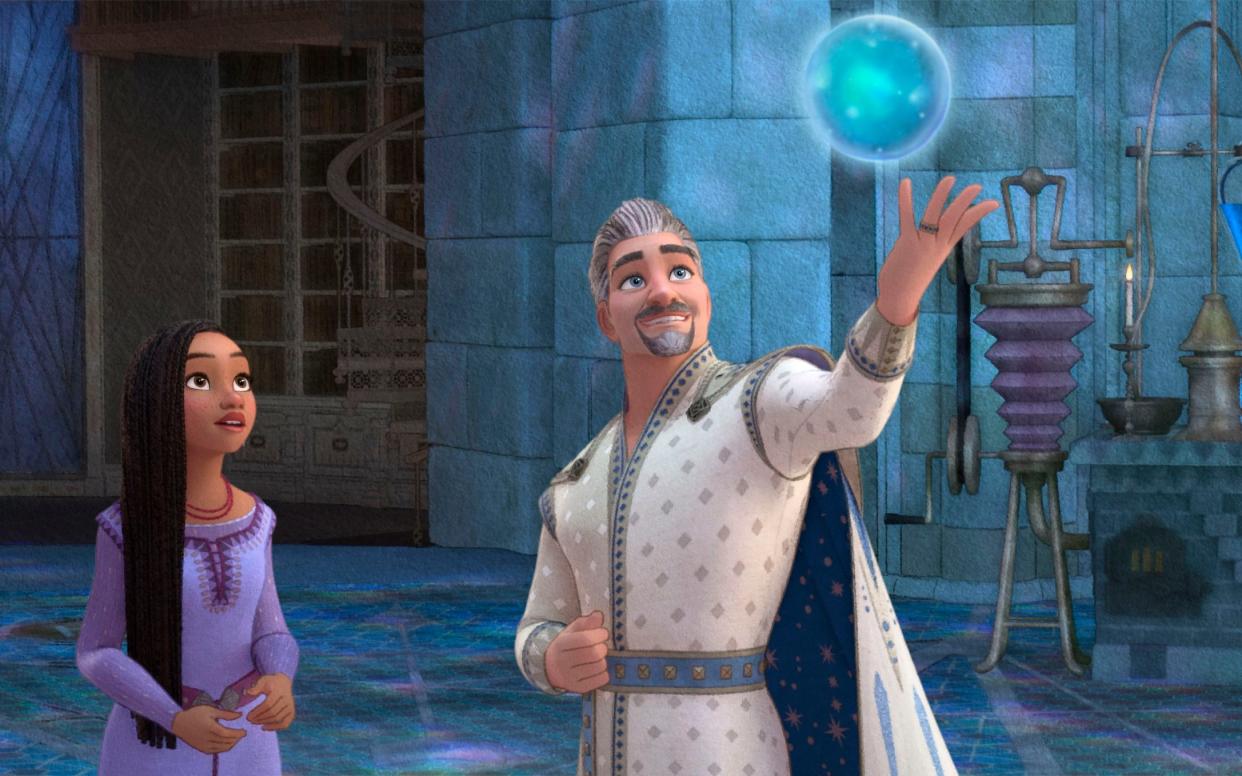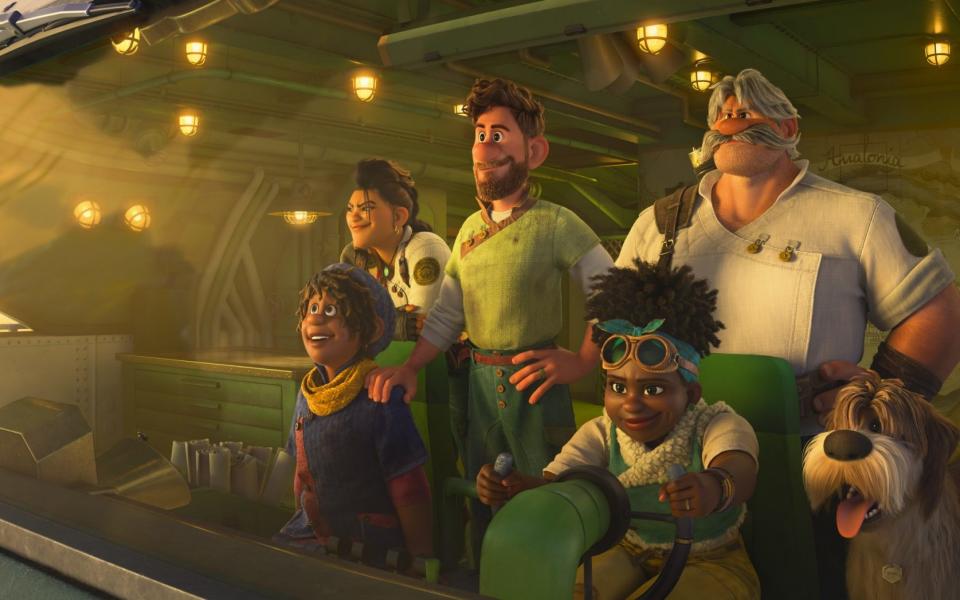Why Wish is yet another Disney box office disaster

- Oops!Something went wrong.Please try again later.
- Oops!Something went wrong.Please try again later.
- Oops!Something went wrong.Please try again later.
Cast your mind back, dear reader, to the mists of 2019, when it seemed like Disney had the film business cracked. Depending on your tastes, the studio’s decade-long stockpiling of beloved brands (Pixar, Star Wars, and above all Marvel) was either rescuing cinema or destroying it. But the numbers it yielded – £10.4 billion at the global box office in 2019 alone, from Avengers: Endgame, Captain Marvel, The Rise of Skywalker, Toy Story 4, Frozen II, the CG remake of The Lion King – meant you couldn’t argue with the blunt business sense.
Well, apparently you can now. In the last month, Disney have released two films which feel like the logical endpoint of that strategy: Wish, over the weekend, and The Marvels, a few weeks before that. Both were essentially Brand: The Movie, summing up everything audiences adored about each of their respective franchise silos. And in both cases, prospective audiences overwhelmingly said: actually, no thanks, we’re good.
Wish was marketed as a celebration of Disney Animation’s centenary year, with its classic wish-upon-a-star plot that pulled together themes and tropes from 100 years of beloved hand-drawn and CG features. But in the US, it took just $19 million over the Thanksgiving weekend – traditionally a big time for family cinema trips – and $49m worldwide.
When the original Frozen (another traditional-with-a-modern-twist fairy-tale musical) opened exactly 10 years earlier, it made three and a half times that sum. Poor Asha and her wisecracking goat sidekick were even handily beaten by Ridley Scott’s Napoleon, which runs an hour longer and was rated 15 by the BBFC: no lucrative family outings there.
This disappointment came hot on the tail of The Marvels, which crashed and burned earlier this month with $46.1m in the US and $110.3m worldwide: the superhero series’ lowest American opening (and, in the UK, third-lowest) since it began in 2008. True, it had been whispered for some time that the film was a ‘troubled project’, and in the weeks before its release its director, Nia DaCosta, seemed to have been scapegoated somewhat in a series of sneaky briefings to the trade press (she was planning her next film during the edit, she’d skipped a cast and crew screening, and so on).
But in purely creative terms, The Marvels felt like the perfect embodiment of Disney’s approach to this particular IP trove, from its wacky tone to its superficially progressive ethos in a let’s-get-Twitter-onside way, and of course heavy cross-pollination from other films and shows. It was a this-is-who-we-are mission statement, and the response from the market was: OK, can we have someone else?

So what’s the problem here? Part of it is audience fatigue. Marvel’s once-enormous audience is burnt out, and only the hardcore rump remains: fewer, better, cheaper films seems the smartest way to arrest decline there.
But the flopping of Wish is a knottier business. Disney Animation hasn’t had a huge box office hit since 2019, when the safe bet of Frozen 2 paid off by grossing almost $1.5 billion. For Thanksgiving 2022, the studio pushed the boat out with the very non-traditional sci-fi adventure Strange World – but that ended up losing $197 million, which suggests innovation alone isn’t the solution here. Indeed, lavish fairy-tale musicals are what the studio famously does better than anyone else. After their noughties doldrums, what was it that revived their spirit and fortunes? Two stellar examples of the above: Tangled and The Princess and the Frog.
Animation itself is still thriving theatrically, too. Trolls Band Together from DreamWorks is closing in on $150 million worldwide, and £15 million in the UK, after five weeks on release. (It also cost less than half of what Wish did to make.)
Wish, sadly, just isn’t very good. Yet executives may now be twitchily wondering if the problem is the Disney brand itself. More efficiently and mercilessly than any other studio, Disney trained its fans to associate its output with streaming, after ploughing so many of their resources at the start of the pandemic into the launch of Disney+. The service lit up with a run of exclusive grade-A Pixar films (Soul, Luca, Turning Red) and seemingly endless Marvel and Star Wars serials. The message, hammered home relentlessly in marketing, is that their output belonged in the living room, not the multiplex. And unfortunately for them, their sizeable customer base seems to have taken heed.

